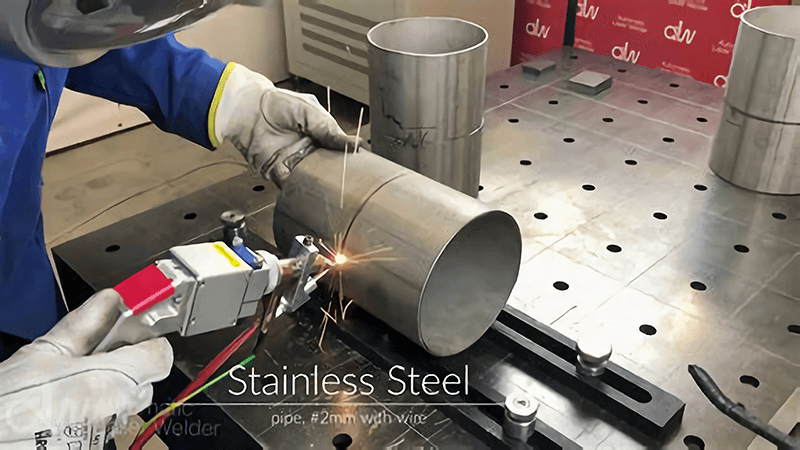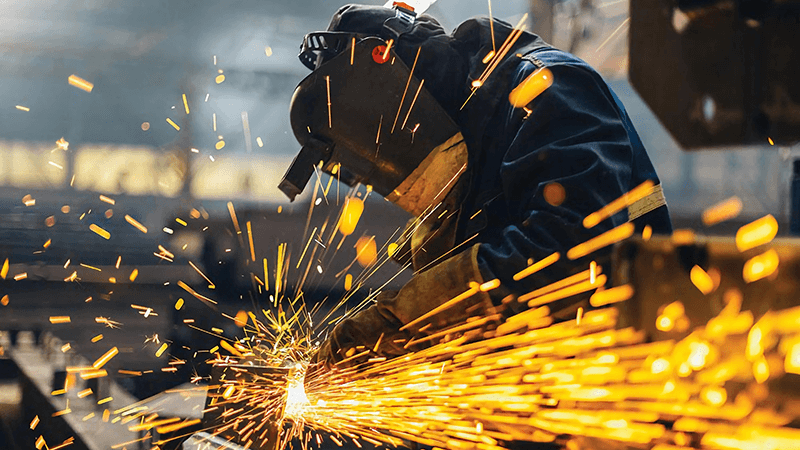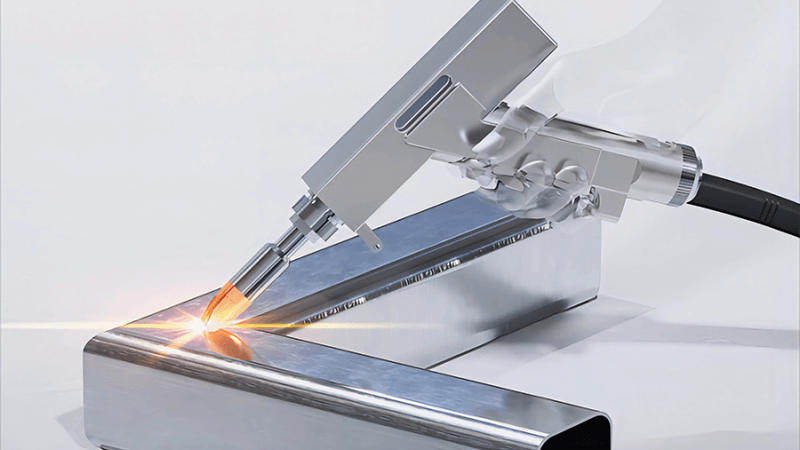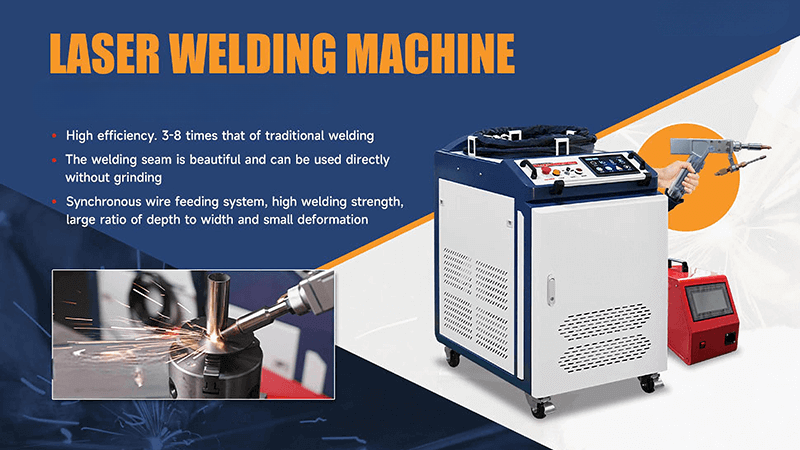When it comes to welding, not all machines are created equal. Many businesses struggle to find the right laser welding system that balances speed, precision, and cost. Choosing the wrong type can lead to rework, downtime, and lost revenue.
There are several types of laser welding machines, each designed for specific applications and environments. Understanding the differences is key to selecting the right tool for the job.
Selecting a laser welding machine is not just about specs—it’s about how well the machine integrates into your workflow. I’ve seen firsthand how the right tool can turn bottlenecks into growth opportunities.

What are the 4 main types of welding?
Welding technologies have evolved, and laser welding is now one of the most precise and efficient methods in manufacturing. But even within laser welding, there are distinct formats that suit different needs.
The four main types of laser welding machines are handheld, QCW (quasi-continuous wave), platform-based, and robotic. Each has unique strengths depending on the use case.
Handheld Laser Welding Machine
The handheld laser welding machine1 has become a go-to solution for workshops and small-scale operations. It’s lightweight, portable, and requires minimal training to operate. At Kirin Laser, we’ve seen clients increase productivity by over 30% just by switching from traditional TIG welding to our handheld system.
The biggest benefit here is flexibility. Whether you're welding stainless steel kitchenware or performing on-site repairs, this machine adapts quickly. It's fast, precise, and safe to use with basic protective gear. In one case, a customer in automotive repair reduced welding time by half using our handheld model.
| Feature | Handheld Laser Welding |
|---|---|
| Precision | High |
| Portability | Excellent |
| Learning Curve | Low |
| Best Use Case | Maintenance, Repair |
| Cost Efficiency | High ROI |
QCW Laser Welding Machine
QCW laser welding2 bridges the gap between precision and power. Unlike continuous lasers that can overheat materials, QCW pulses allow for high peak energy with low average power. This makes it perfect for delicate tasks like microelectronics or copper welding.
We introduced this machine to a customer who struggled with welding thin copper wires. Traditional welding caused warping and poor conductivity. With QCW, the results were flawless. Clean welds, minimal thermal impact, and zero rework.
| Feature | QCW Laser Welding |
|---|---|
| Pulse Power | High Peak |
| Thermal Input | Minimal |
| Material Range | Copper, Gold, Thin Steel |
| Ideal Applications | Electronics, Jewelry |
| Operational Control | Very Precise |
Platform Laser Welding Machine
Our platform laser welding machines are workhorses for high-precision manufacturing environments. With CNC integration, auto-focusing systems, and enclosed working areas, they are designed for repeatability and quality.
One of our electronics clients integrated this into their production line, which brought a major improvement in consistency. Defect rates dropped by 40% in the first month. That level of consistency can’t be matched with manual or handheld systems.
| Feature | Platform Laser Welding |
|---|---|
| Automation | Full |
| Repeatability | High |
| Customization | Flexible Fixtures |
| Best Use Case | Mass Production |
| Safety | Enclosed System |
Robotic Laser Welding Machine
Robotic laser welding is the future—especially for industries like automotive, aerospace, and heavy manufacturing. These machines operate 24/7 with pinpoint accuracy and minimal supervision.
We installed a robotic welding cell for a Tier 1 automotive parts supplier. In 3 months, their throughput increased by 60%. It wasn’t just speed. The consistency across thousands of units saved them significant post-weld inspection costs.
| Feature | Robotic Laser Welding |
|---|---|
| Speed | Ultra Fast |
| Integration | With Industrial Robots |
| Ideal Use Cases | Automotive, Aerospace |
| Downtime | Low |
| Labor Savings | High |

What are the modes of laser welding?
Laser welding operates in different modes depending on the application, material, and desired finish. These modes influence the heat input, penetration depth, and weld quality.
The main laser welding modes are conduction, keyhole, pulsed, and continuous wave. Each mode is suited for different types of tasks, and choosing the right one is crucial for optimal results.
Understanding Welding Modes by Function
Conduction Mode3
Conduction mode welds are shallow and ideal for thin materials. They create a wide but shallow weld pool, minimizing deformation.
Keyhole Mode4
In this mode, the laser creates a deep, narrow hole in the material, allowing for deeper welds. It’s used when structural strength is critical.
Pulsed Mode5
Pulsed welding provides high peak power in short bursts. It’s great for spot welding or sensitive materials like jewelry or electronics.
Continuous Wave
CW mode provides steady energy, good for long seam welds and automation.
| Mode | Depth | Best For | Heat Affected Zone |
|---|---|---|---|
| Conduction | Shallow | Thin Metals, Foils | Low |
| Keyhole | Deep | Structural Welding | Medium |
| Pulsed | Controlled | Precision Components | Very Low |
| Continuous | Long Welds | Automated Welding | High |
Each machine at Kirin Laser can be tuned to support one or more of these modes. For example, our QCW machines operate in pulsed mode, which is ideal for delicate applications. Our platform and robotic systems support both CW and keyhole welding for more robust needs.

What type of laser is used in welding?
Laser type matters as much as welding mode. The wavelength, power density, and delivery method affect how the laser interacts with different materials.
The most common lasers used in welding are fiber lasers, Nd:YAG lasers, and CO₂ lasers. Fiber lasers dominate modern applications due to their efficiency, beam quality, and maintenance advantages.
Matching Laser Type to Application
Fiber Laser6
This is the industry standard now. With high electrical efficiency and minimal maintenance, fiber lasers handle metals like steel, aluminum, and brass. Most of our handheld, robotic, and platform machines use fiber lasers because they’re reliable and low-cost to operate.
Nd:YAG Laser7
These lasers have been around for decades. They use crystal rods to produce the beam and are typically used in pulsed applications like QCW welding.
CO₂ Laser8
Older technology but still relevant for cutting non-metals. It’s less common in welding but still used for thick plastics and some metals.
| Laser Type | Efficiency | Cooling Needs | Use Case |
|---|---|---|---|
| Fiber | High | Low | Metals, High Volume |
| Nd:YAG | Medium | High | Precision, Pulsed Welding |
| CO₂ | Low | High | Non-metals, Plastics |

What are the different types of lasers?
Beyond welding, lasers are used in cutting, engraving, marking, and cleaning. Each laser type has unique properties that make it suitable for specific tasks.
The main types of lasers are fiber, CO₂, Nd:YAG, and diode lasers. Each serves a different role in manufacturing based on material type, depth, and speed.
Industrial Laser Types and Their Uses
At Kirin Laser, we use fiber lasers9 across our welding, cleaning, and marking machines because they are the most versatile. For deep engraving or marking, fiber lasers offer unbeatable clarity and speed. For cleaning applications, we use pulse fiber lasers with variable power output to remove rust, paint, or oil without damaging the base metal.
Diode lasers are more often found in consumer or low-power applications. CO₂ lasers10 still work well for cutting acrylics, wood, and other non-metal materials.
| Laser Type | Best Application | Power Range | Material Compatibility |
|---|---|---|---|
| Fiber | Welding, Cutting, Marking | High | Metals |
| CO₂ | Non-metal Cutting | Medium | Plastics, Wood |
| Nd:YAG | Pulsed Welding | Medium | Gold, Copper, Thin Steel |
| Diode | Low-power Engraving | Low | Plastics, Organics |

Conclusion
Laser welding11 is not one-size-fits-all. From handheld units for quick repairs to robotic systems for mass production, each type of machine serves a unique role. At Kirin Laser, we don’t just sell machines—we help our clients find the right solution that fits their needs. Whether you're working with delicate electronics or heavy-duty components, the right laser welding technology can transform your workflow, improve quality, and reduce costs.
-
Explore the advantages of handheld laser welding machines, including increased productivity and flexibility for various applications. ↩
-
Learn how QCW laser welding technology enhances precision and minimizes thermal damage, making it ideal for delicate tasks. ↩
-
Explore this link to understand how Conduction Mode works and its applications in welding thin materials. ↩
-
Discover the significance of Keyhole Mode in achieving deep welds and its importance in structural strength. ↩
-
Learn about Pulsed Mode and its advantages for precision welding in sensitive materials like jewelry and electronics. ↩
-
Explore the benefits of Fiber Lasers, including efficiency and versatility in various applications, to enhance your understanding of modern laser technology. ↩
-
Learn about the specific uses of Nd:YAG Lasers in precision welding, which can help you choose the right technology for your needs. ↩
-
Discover how CO₂ Lasers can effectively cut non-metals and thick plastics, providing insights into their continued relevance in the industry. ↩
-
Explore the benefits of fiber lasers, known for their versatility and efficiency in various industrial applications. ↩
-
Learn about CO₂ lasers and their effectiveness in cutting non-metal materials like acrylics and wood. ↩
-
Find laser welding machine from Kirin Laser, and clciking this link to get all tyoes of laser welding machine and prices. ↩





